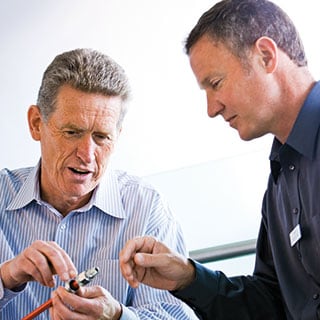Webinar: Hydrogen Embrittlement of Stainless Steel 316/316L

Hydrogen embrittlement of 316/316L stainless steel
When? November 18, 2021, 15:00-15:45, 15:00-15:45
Speaker:
- Dr. Gerhard Schiroky (Principal Scientist, Swagelok)
Webinar content
Hydrogen affects the mechanical properties and fatigue behavior of 316 stainless steel. In this webinar, we will show the effects of hydrogen on the yield strength, tensile strength, elongation, and reduction in area of stainless steels with different chemical compositions.
Missed the webinar? Request the webinar recording retroactively now
Sorry you couldn't attend the webinar you wanted? No problem, here you have the possibility to catch up. Send an email with your name, company, phone number and the webinar you want to attend to marketing@best-hamburg.de and we will send you all the information.
Questions and answers from the webinar
Due to time constraints, not all questions could be answered during the webinar, so we have compiled the remaining questions including answers here.
Did I understand correctly that the effect at the temperature of liquid hydrogen or liquid helium is negligible?
Correct. The diffusion coefficient of hydrogen is very low at these temperatures.
There was a lot of talk about nickel now, what is the effect of chromium content?
316 with higher Ni content usually also has higher Cr content. People focus on Ni as a stabilizing element for austenite.
Is there any known H2 embrittlement of elastomers that Swagelok uses?
In Swagelok's components such as valves, only elastomers that are compatible with H2 are used. You have to pay attention to the operating temperature range.
Do you also see a reduction in service life for tubes with high vibration loads, especially in the area of clamping rings or welded joints?
Vibrations must be avoided at all costs; they shorten the service life, especially at higher amplitudes.
